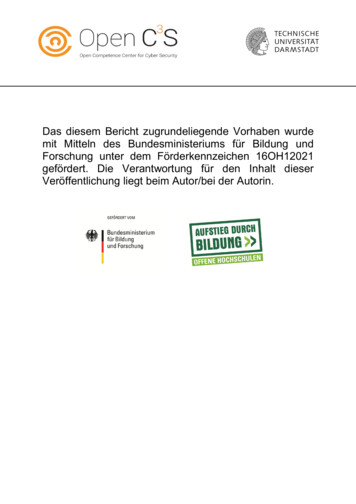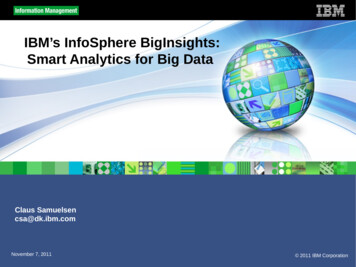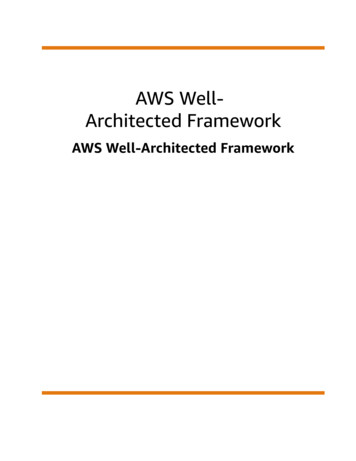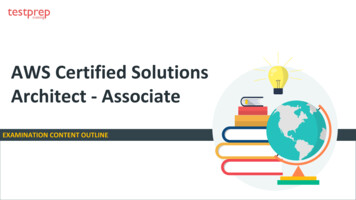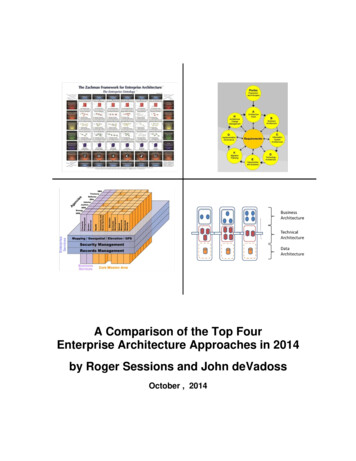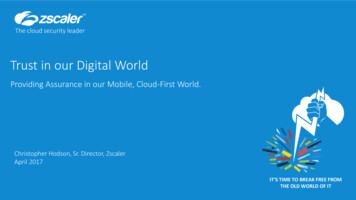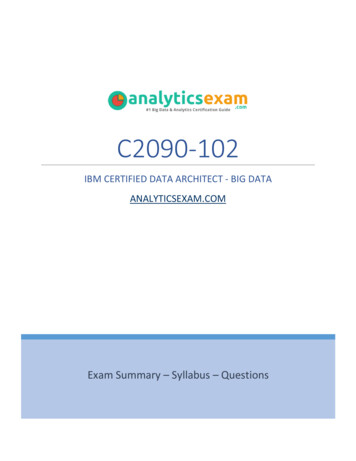
Transcription
C2090-102IBM CERTIFIED DATA ARCHITECT - BIG DATAANALYTICSEXAM.COMExam Summary – Syllabus – Questions
C2090-102 Sample Questions and Exam SummaryTable of ContentsIntroduction to C2090-102 Exam on IBM Certified Data Architect - Big Data . 2IBM C2090-102 Certification Details: . 2IBM C2090-102 Exam Syllabus:. 2C2090-102 Sample Questions: . 4Answers to C2090-102 Exam Questions: . 7C2090-102 - IBM Certified Data Architect - Big Datapg. 1
C2090-102 Sample Questions and Exam SummaryIntroduction to C2090-102 Exam on IBMCertified Data Architect - Big DataThis page is a one-stop solution for any information you may require for IBM CertifiedData Architect - Big Data (C2090-102) Certification exam. The IBM C2090-102 ExamSummary, Syllabus Topics and Sample Questions provide the base for the actual IBMCertified Big Data Architect exam preparation, we have designed these resources to helpyou get ready to take your dream exam.The IBM Certified Data Architect - Big Data credential is globally recognized for validatingIBM Big Data Architect knowledge. With the IBM Certified Big Data Architect Certificationcredential, you stand out in a crowd and prove that you have the IBM Big Data Architectknowledge to make a difference within your organization. The IBM Certified Data Architect- Big Data Certification (C2090-102) exam will test the candidate's knowledge onfollowing areas.IBM C2090-102 Certification Details:Exam NameIBM Certified Data Architect - Big DataExam CodeC2090-102Exam Duration90 minutesExam Questions55Passing Score60%Exam Price 200 (USD)TrainingTest Preparation ResourceExam RegistrationPearson VUESample QuestionsIBM Big Data Architect Certification Sample QuestionPractice ExamIBM Big Data Architect Certification Practice ExamIBM C2090-102 Exam Syllabus:ObjectiveDetails- Define the input data structure- Define the outputs- Define the security requirements- Define the requirements for replacing and/or merging withRequirements (16%)existing business solutions- Define the solution to meet the customer's SLA- Define the network requirements based on the customer'srequirementsC2090-102 - IBM Certified Data Architect - Big Datapg. 2
C2090-102 Sample Questions and Exam SummaryObjectiveDetails- Determine when a cloud-based solution is more appropriatevs. in-house (and migration plans from one to the other)- Demonstrate why Cloudant would be an applicable technologyfor a particular use case- Demonstrate why SQL or NoSQL would be an applicabletechnology for a particular use case- Demonstrate why Open Data Platform would be an applicabletechnology for a particular use case- Demonstrate why BigInsights would be an applicabletechnology for a particular use case- Demonstrate why BigSQL would be an applicable technologyfor a particular use case- Demonstrate why Hadoop would be an applicable technologyfor a particular use case- Demonstrate why BigR and SPSS would be an applicableUse Cases (46%)technology for a particular use case- Demonstrate why BigSheets would be an applicabletechnology for a particular use case- Demonstrate why Streams would be an applicable technologyfor a particular use case- Demonstrate why Netezza would be an applicable technologyfor a particular use case- Demonstrate why DB2 BLU would be an applicable technologyfor a particular use case- Demonstrate why GPFS/HPFS would be an applicabletechnology for a particular use case- Demonstrate why Spark would be an applicable technologyfor a particular use case- Demonstrate why YARN would be an applicable technology fora particular use case- Define the necessary technology to ensure horizontal andvertical scalability- Determine data storage requirements based on data volumes- Design a data model and data flow model that will meet theApplying Technologiesbusiness requirements(16%)- Define the appropriate Big Data technology for a givencustomer requirement (e.g. Hive/HBase or Cloudant)- Define appropriate storage format and compression for givencustomer requirement- Define the potential need for high availability- Define the potential disaster recovery requirementsRecoverability (11%) - Define the technical requirements for data retention- Define the technical requirements for data replication- Define the technical requirements for preventing data loss- Define the hardware and software infrastructure requirements- Design the integration of the required hardware and softwareInfrastructure (11%) components- Design the connectors / interfaces / API's between the BigData solution and the existing systemsC2090-102 - IBM Certified Data Architect - Big Datapg. 3
C2090-102 Sample Questions and Exam SummaryC2090-102 Sample Questions:Q 1: A bank wants to build a system that tracks all ATM and online transactionsin realtime.They want to build a personalized model of their customer’s financial activity byincorporating enterprise data as well as social media data. The system must beable to learn and adapt over a period of time.These personalized models will be used for real time promotions as well as forany fraud or crime detections. Given these requirements, which of the followingwould recommend?Options:A. NetezzaB. HadoopC. SparkD. CloudandQ 2: A large Retailer (online and “brick & mortar”) processes data for analyzingmarketing campaigns for their loyalty club members. The current process takesweeks for processing only 10% of social data.What is the most costeffective platform for processing and analyzing campaignresults from social data on a daily basis using 100% dataset?Options:A. High Speed Mainfraime ProcessingB. Enterprise Data WarehouseC. BigInsights Open Data PlatformD. In Memory ComputingQ 3: A media company wants to measure the effectiveness of their advertisingcampaign. Before they release a movie they prepare and run a campaign ktheywantto decidewhetheror not they should continue a particular campaign. Which ofthe following should be selected to meet these requirements?Options:A. HadoopB. UnicaC. StreamsD. Pure Data for AnalyticsC2090-102 - IBM Certified Data Architect - Big Datapg. 4
C2090-102 Sample Questions and Exam SummaryQ 4: A telecommunication company needs a Big Data solution that could storeand analyze multiple years worth of call detail records (CDRs, aprox. 17 billionevents per day) containingswitch, billing, and network event data for its millionsof subscribers.Which of the following would you recommend for these requirements?Options:A. Pure Data System for AnalyticsB. Infosphere DataStageC. DB2D. SPSSQ 5: As you explore the data for a BigSheets workbook, you must run theworkbook against the full data set to get the most current results for analysis.Which statement is TRUE regarding running and visualizing data in a workbook?Options:A. When you add sheets to workbooks, saving the sheets runs the individual data for thesheet but not for the full workbookB. By default, the first sheet in your workbook is named the Results sheetC. When you save and run the workbook, the data in a Child Workbook is the output forthat workbookD. You can create graphs for more than one sheet within the same workbookQ 6: Faced with a wide area network implementation, you have a need forasynchronous remote updates. Which one of the following would best addressthis use case?Options:A. GPFS File clones can be created from a regular file or a file in a snapshot usingthe mmclonecommandB. HDFS NameNode The NameNode keeps an image of the entire file system namespaceand file Blockmap in memory. This key metadata item is designed to be compact, suchthat a NameNode with 4 GB of RAM is plenty to support a huge number of files anddirectoriesC. HDFS Cluster rebalancing is compatible with data rebalancing schemes. A schememight automatically move data from one DataNode to another if the free space on aDataNode falls below a certain thresholdD. GPFS Active File Management allows data access and modifications even when remotestorage cluster is unavailableC2090-102 - IBM Certified Data Architect - Big Datapg. 5
C2090-102 Sample Questions and Exam SummaryQ 7: In designing a new Hadoop system for a customer, the option of using SANversus DAS was brought up. Which of the following would justify choosing SANstorage?Options:A. SAN storage reduces and removes a lot of the HDFS complexity and managementissuesB. SAN storage provides better performance than DASC. SAN storage supports replication, reducing the need for 3-way replicationD. SAN storage removes the Single Point of Failure for the NameNodeQ 8: The AQL query language is the easiest and most flexible tool to pullstructured output from which of the following?Options:A. JDBC connected relational data martsB. Hbase schemasC. Unstructured textD. Hive data structuresQ 9: Which of the following is a requirement for data retention and archival?Options:A. Hosting locationB. A format and storage repository for archived dataC. Solid-state technologyD. Public cloudQ 10: Which of the following statements is TRUE regarding cloud computingsolutions?Options:A. Cloud solutions rely on scaling up (vertical) scaling vs. scale out (horizontal) scalingB. Server virtualization is a requirement in a cloud implementationC. Stateless applications are better candidates for cloud services than applications thatmaintain stateD. Cloud security is planned, developed, and layered on top of an application after theapplication development process is completeC2090-102 - IBM Certified Data Architect - Big Datapg. 6
C2090-102 Sample Questions and Exam SummaryAnswers to C2090-102 Exam 0Answer:Answer:Answer:Answer:Answer:CAADBNote: If you find any typo or data entry error in these sample questions, we requestyou to update us by commenting on this page or write an email onfeedback@analyticsexam.comC2090-102 - IBM Certified Data Architect - Big Datapg. 7
The IBM Certified Data Architect - Big Data credential is globally recognized for validating . - Demonstrate why BigInsights would be an applicable technology for a particular use case . A. Cloud solutions rely on scaling up (vertical) scaling vs. scale out (horizontal) scaling B. Server virtualization is a requirement in a cloud implementation

